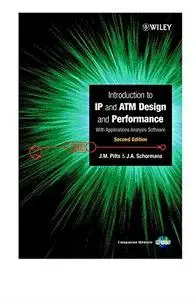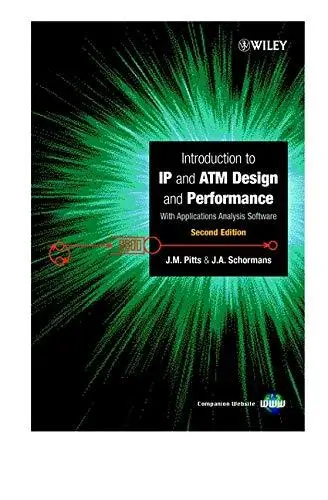Introduction to IP and ATM Design and Performance: With Applications Analysis Software, Second Edition By J M Pitts, J A Schormans(auth.)
2000 | 305 Pages | ISBN: 047149187X | PDF | 3 MB
2000 | 305 Pages | ISBN: 047149187X | PDF | 3 MB
Many engineers and students experience difficulty in making sense of issues associated with IP and ATM teletraffic techniques. This is partly because of the subject itself: networks are flexible, complicated, and still evolving. However, some of the difficulties arise because of the advanced mathematical methods that have been applied to provide analytic tools. The research literature abounds with many and varied analytical approaches applied to a bewildering array of traffic mixes, switch designs and traffic control mechanisms. Introduction to IP and ATM Design and Performance provides: an introduction to IP and ATM traffic issues; performance evaluation using analysis and simulation; presentation of key formulas describing traffic and queueing behaviour and practical examples, graphs and tables for the design of wide area networks. Particular areas addressed include the fundamental traffic control functions: connection admission control; usage parameter control; priority control; queue scheduling and buffer management. Features include: Clear Expansion of typical traffic and queueing behaviour Simple exposition of fundamental performance evaluation methods and techniques for ATM and IP All formulas are available in MathCAD files on the related web-site Avoids the use of advanced mathematical methods This simple intuitive approach is easy to follow and will benefit both engineers in the telecommunications industry and undergraduate and postgraduate students in telecommunications, communications engineering, computer engineering courses.Content: Chapter 1 An Introduction to the Technologies of IP and ATM: The Bare Necessities (pages 1–14): Chapter 2 Traffic Issues and Solutions: Short Circuits, Short Packets (pages 15–43): Chapter 3 Teletraffic Engineering: The Economic and Service Arguments (pages 45–55): Chapter 4 Performance Evaluation: How's It Going? (pages 57–68): Chapter 5 Fundamentals of Simulation: Those Vital Statistics (pages 69–80): Chapter 6 Traffic Models: You've Got a Source (pages 81–93): Chapter 7 Basic Cell Switching: Up Against the Buffers (pages 95–111): Chapter 8 Cell?scale Queueing: Dealing with the Jitters (pages 113–123): Chapter 9 Burst?scale Queueing: Information Overload! (pages 125–148): Chapter 10 Connection Admission Control: The Net That Likes To Say YES! (pages 149–166): Chapter 11 Usage Parameter Control: There's a Hole in My Bucket (pages 167–186): Chapter 12 Dimensioning: Real Networks Don't Lose Cells? (pages 187–204): Chapter 13 Priority Control: The Customer Comes First (pages 205–225): Chapter 14 Basic Packet Queueing: The Long and Short of It (pages 227–251): Chapter 15 Resource Reservation: Go With The Flow (pages 253–266): Chapter 16 IP Buffer Management: Packets in the Space – Time Continuum (pages 267–285): Chapter 17 Self?similar Traffic: Play It Again, Sam (pages 287–298):



